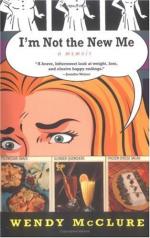The exception already noted was in Spain, and there only in the case of a single painter. Francisco Goya y Lucientes, “Pintor Espanol,” as he delighted to call himself, would be, indeed has been, a fascinating subject for picturesque biography. Charles Yriarte, the well-known French art critic, has given the world a most interesting and complete story of Goya’s life, which, though it is only separated from our own day by a span of seventy years, chronicles the exploits of one who in the history of art must hark back to Benvenuto Cellini in the sixteenth century to find his parallel.
Goya was born March 31, 1746, at Fuente de Todos, in the province of Aragon. The son of a small farmer, he was placed when very young in the local Academy of Fine Arts at Saragossa, where he received instruction from Bayen and Luzan, painters little known outside of Spain. The swashbuckler instincts which were to govern him through life manifested themselves here, where in a street brawl he laid low three of his adversaries. He found it prudent to evade both justice and the vengeance which followed swift and sure in those days in Spain, by flying to Madrid. Soon after his arrival in the capital, however, in continuation of his old mode of life, he was picked up for dead in one of the low quarters of the town. Surviving the poignard, but again threatened with arrest, he joined a quadrilla of bull-fighters, in whose company he went from town to town, giving exhibitions of his prowess in the national sport.
[Illustration: THE GARROTED MAN. FROM AN ETCHING BY GOYA.
There is a tradition that this etching was made from nature, the model—some malefactor executed by the strangling method employed in Spain—being studied by Goya from his chamber window.]
With all this, painting must have been somewhat of an interlude; but Goya had early shown signs of great talent, and before he left Saragossa, his master, Josepha Bayen, had confidence enough in his future to entrust the happiness of his daughter to his care by permitting his marriage to her. Goya’s biographer notes that through all the various adventures of his career he had the utmost care for the material comfort of this lady. Her character must impress us to-day as charitable to excess; for, shortly after the bull-fighting episode, Goya found himself in Rome, where his next exploit was the abduction, from a convent, of a noble Roman girl. With the police once more on his track, he sought refuge at the Spanish Embassy, whence he was despatched home in disguise, probably to the relief of his country’s representative in Rome. Before this adventure, which was only one of many which the charitable wife had to pardon, he had attracted the attention of David, who was then in Italy, and who, as his art differed in every way from that of Goya, must have been strongly impressed by his work to give it his approval.
[Illustration: DEATH ON THE BATTLE-FIELD. FROM AN ETCHING BY GOYA.




